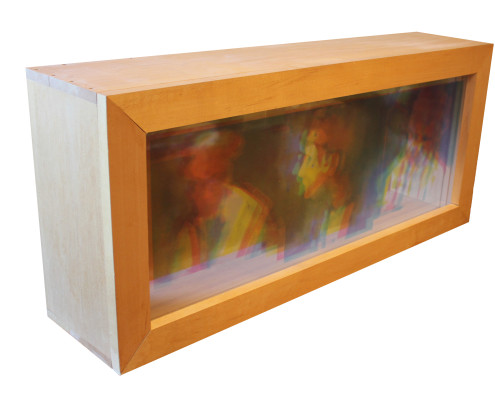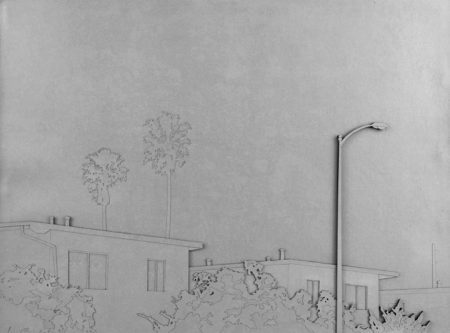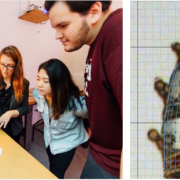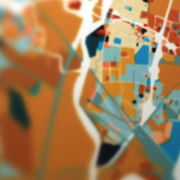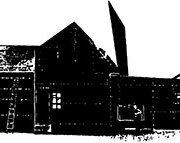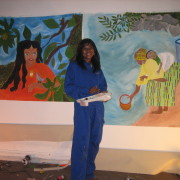Reconstructed History
At a panel discussion for the Taplin Gallery exhibition Reconstructed History a unique conversation occurred focusing on decommissioned spaces and objects, the transferred gaze, layers, landscape interiors as mental spaces and site-specific social history. Basically, all of my favorite things.
The Arts Council of Princeton presents Reconstructed History. Curated by Amy Brummer, Reconstructed History features work by artists Annie Hogan, Ann LePore, Casey Ruble, Leslie Sheryll, and Wendel White. These artists transform documentary images by obscuring the primary data through layers of processes, both analog and digital. By doing so, the artists create visual narratives that speak to a broader historical complexity in content and technique.
Annie Hogan’s dreamlike photographs of buildings at the Berkeley Plantation in Virginia fuse the mansions of masters with the houses of slaves.
Ann LePore’s three-dimensional Modern Catholic Kitchen started with an analog image of pulled from a Portapack video camera shot in her mother’s kitchen during her childhood.
Casey Ruble uses silver paper collages to depict present-day sites of historical struggle such as Underground Railroad safe houses.
Leslie Sheryll pulls her imagery from tintypes of women that are reworked to suggest their unseen complexity and reimagined through the eyes of a 21st century female gaze.
Wendel White’s Schools for the Colored Series, depicts the architecture and geography of America’s educational apartheid, in the form of a system of “colored schools,” within the landscape of southern New Jersey, Pennsylvania, Ohio, Indiana, and Illinois.
“From a subject matter standpoint, exhibiting Wendel’s “Schools for the Colored” in the ACP’s Robeson Center, seemed like a natural fit for a space that sits at the corner of a fragile intersection of the future and past,” says curator Amy Brummer. “I felt that the artists were speaking to a sort of physical and psychological archaeology – that reflects the way places and historical narratives get built up, torn down, grown over, excavated, rebuilt, repurposed and reborn.” -Amy Brummer, curator and founder of the Bruce Berenson Foundation for Darkroom Photography at the Arts Council of Princeton.
I met Amy when she first came for a studio visit. I felt an immediate connection to her and it was easy to tell her some of the personal stories behind my processes. With each conversation I had a sense of what my work looked like through her eyes and our conversations were like a type of food, especially because I’d just started a new body of work: Forbidden Views, which incorporated glass photo slides deaccessioned to me from the Metropolitan Museum of Art the year before.







